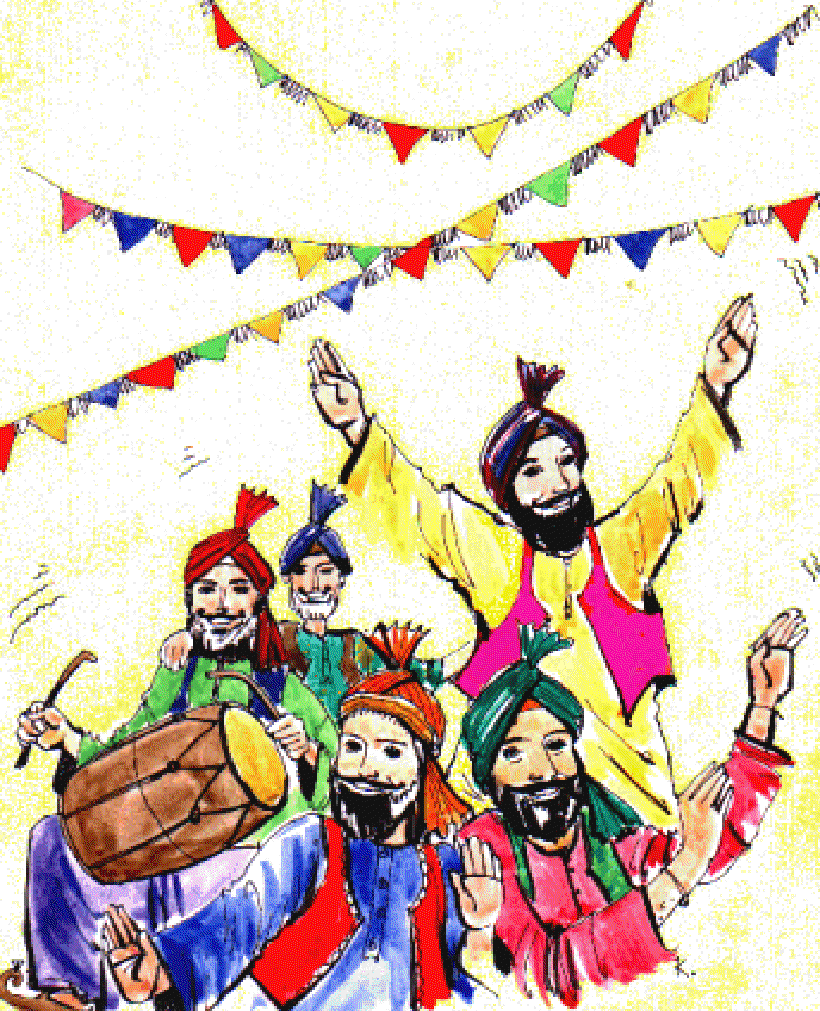Gurpurab – the birth of Guru Nanak
Home / Non Fiction for Kids / Festivals for Kids / Gurpurab – the birth of Guru Nanak
The Birthday of Guru Nanak, the founder of Sikhism, is traditionally celebrated on Kartik Puranmashi, or the full moon day of the month of Kartik.
According to the Shiromani Gurudwara Parbandhak Committee (SGPC), Guru Nanak Sahib was born on 15th April, 1469 at Rai-Bhoi-di Talwandi in the present district of Shekhupura, now Nanakana Sahib in Pakistan. Since the birthday falls on the full moon day of the month Kartik, that is the day that Sikhs all over the world celebrate the birth of their first guru.

Gurpurbs are Sikh festivals which celebrate the lives of Guru Nanak and the nine gurus who followed him. Guru Nanak was born in 1469 in what is now Pakistan. At the age of 30 he mysteriously disappeared for three days. When he reappeared, he began to preach the Sikh faith and spent the rest of his life teaching, writing and travelling around the world to discuss religion with Muslims and Hindus.
Sikhs celebrate Guru Nanak’s birthday and the other Gurpurbs with an Akhand Path, a reading of the Sikh holy scriptures, the Guru Granth Sahib, continuously from beginning to end. This is done by a team of Sikh men and women, each reading for 2-3 hours over 48 hours, beginning two days before and ending early on the morning of the birthday.
On the day before the birthday, processions are held in India and in some parts of England. These are led by five people representing the original Panj Pyare (Five Beloved Ones) and followed by singers, musicians and even teams of people demonstrating martial arts.
The Gurdwaras (places where Sikhs go to pray) are decorated with flowers, flags and posters depicting various aspects of Sikhism. Often they are also illuminated. Sikhs join together to sing, pray and eat together. On the morning of the anniversary, celebrations begin early, at around 4 or 5am, with keertan (musical recitation of hymns from the Guru Granth Sahib) and katha (lectures on Sikhism). These celebrations go on until around 1 or 2 pm.
After this, Karah Parsaad is served. This is halwa, a sweet-tasting food which has been blessed. It is made from semolina or wheat flour, sugar and ghee (clarified butter) and is served warm. The congregation then shares a langar (meal) from the free kitchen. Nowadays, celebrations also include fireworks.
Sometimes the festival extends into the evening, with prayers and hymns continuing long into the night. Sikhs who are unable to visit the Gurdwara during the festival hold a similar ceremony in their own homes.
427 words |
4 minutes
Readability:
Grade 9 (14-15 year old children)
Based on Flesch–Kincaid readability scores
Filed under: festivals
Tags: #pakistan, #birthday, #celebrations, #guru nanak, #sikhism, #sikhs
You may also be interested in these:
The Story of Dussehra
Holi is For Children
Rediscovering a Smoke-less Diwali
Historic Station Soon to be History
New Year in South Pole